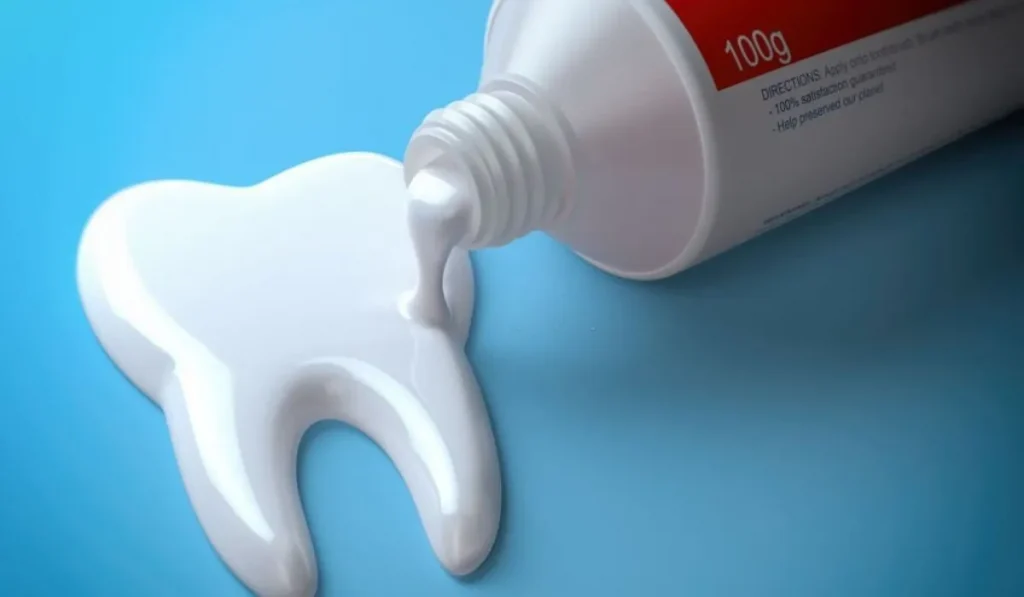Brushing our teeth is an essential part of our daily oral hygiene routine. Toothpaste usually contains fluoride as it helps prevent cavities by strengthening tooth enamel. However, fluoride-free toothpaste has been growing in popularity recently. But is it really good for your teeth?
In this article, we will understand what fluoride-free toothpaste is, look at its pros and cons, benefits, and tips for maintaining oral health while using it. This will help you make an informed decision about whether it is suitable for your dental needs or not.
What Is Fluoride-Free Toothpaste? How It Is Important For Your Teeth?
Fluoride-free toothpaste does not contain fluoride which is commonly added to regular toothpastes to help prevent cavities. Fluoride strengthens tooth enamel, the outer protective layer of the tooth, by remineralizing areas weakened by acid attacks from food and drinks. It also inhibits bacteria from producing acids that erode enamel.

Instead, fluoride-free toothpastes use natural ingredients and compounds like xylitol, tea tree oil, aloe vera, and calcium to clean, polish, and remineralize teeth. Xylitol helps prevent bacteria from adhering to teeth while essential oils like tea tree oil act as natural antibacterial and antimicrobial agents. Aloe vera soothes inflamed gums. Calcium, along with compounds like silica, nourishes and repairs tooth enamel.
Fluoride in toothpaste is especially important for people at high risk of cavities like children, teenagers, and those with poor oral hygiene. For those with good brushing habits and minimal exposure to sugary foods, this may be a viable option. However, consult your dentist before switching especially if you have dental concerns.
Is Fluoride-Free Toothpaste Good For Your Teeth and Why?
The key considerations in deciding whether fluoride-free toothpaste is good for your teeth are:
- Fluoride strengthens tooth enamel and fights cavities – this benefit is missing in fluoride-free toothpaste. It is especially useful for high cavity-risk individuals.
- However, if your cavity risk is low and you practice good oral hygiene, fluoride-free toothpaste may work for you. Its natural ingredients reduce bacteria, remove plaque, whiten teeth, and have oral health benefits without fluoride.
- Fluoride-free toothpaste is gentler on tooth enamel than fluoride toothpaste, especially for those worried about fluorosis or tooth staining. However, it may not be as effective for cavity prevention.
- This toothpaste caters to people who want to avoid fluoride due to concerns about potential toxicity, despite authorities considering approved fluoride levels in toothpaste safe. However, it may increase cavity risk when not used properly.
- Those with allergies or sensitivity to fluoride can obviously benefit from fluoride-free toothpaste. However, disregarding fluoride to avoid sensitivity is not advisable without an allergy.
So while fluoride-free toothpaste can clean and benefit your teeth through natural ingredients, it may not provide the cavity protection that regular fluoride toothpaste does. Consulting your dentist is important before making the switch.
Benefits of Fluoride-Free Toothpaste
Here are some of the benefits that fluoride-free toothpastes can offer:
- Gently cleans and polishes teeth through abrasive agents like silica without stripping enamel.
- Helps remove plaque and tartar due to natural cleansing ingredients.
- Reduces bacteria in the mouth through antibacterial agents like tea tree oil.
- Freshens breathe thanks to herbs, essential oils, and baking soda.
- Whitens teeth gently with activated charcoal or hydrogen peroxide.
- Remineralizes and nourishes enamel through compounds like calcium, xylitol, and aloe vera.
- Prevents gum disease and bleeding with anti-inflammatory properties.
- Soothes sensitive teeth being free of irritants like sodium lauryl sulfate.
- Helps heal oral tissue due to healing and antioxidant properties.
- Avoids the risk of fluorosis and staining of teeth through fluoride avoidance.
- Gives peace of mind to people avoiding fluoride due to concerns about toxicity.
Tips To Maintain Oral Health Using Fluoride-Free Toothpaste
Here are some tips to maintain good oral hygiene while using fluoride-free toothpaste:
Read More:- How To Use Coconut Oil For Teeth Whitening? Brighten Your Smile
Conclusion
Fluoride-free toothpaste relies on natural ingredients to clean, polish, and remineralize teeth instead of cavity-preventing fluoride. They can benefit your oral health and aesthetics without fluoride when used diligently with good brushing and flossing habits.
However, fluoride is still the most clinically proven way to strengthen enamel and prevent cavities which fluoride-free pastes lack. Consulting your dentist is key before making the switch to determine if going fluoride-free is advisable based on your oral health status and cavity risk factors.
Overall, maintaining good oral hygiene is paramount whether you choose regular fluoride toothpaste or the fluoride-free alternative.
FAQs
Q1: Does Fluoride-Free Toothpaste whiten teeth?
Yes, fluoride-free toothpaste often contains natural teeth-whitening ingredients like silica, baking soda, hydrogen peroxide, and activated charcoal that can gently remove stains and whiten teeth with regular use.
Q2: Should Kids Use Fluoride-Free Toothpaste?
Fluoride toothpaste is highly recommended for children due to their developing teeth and high cavity risk. Fluoride strengthens enamel and wards off decay. Consult pediatric dentists before using fluoride-free toothpaste on kids.
Q3: Does Fluoride-Free Toothpaste Taste Different?
Fluoride typically does not affect toothpaste flavor. However, fluoride-free pastes rely more on essential oils, herbs, and botanical extracts for flavoring which may taste more distinct or natural.
Q4: Is Fluoride-Free Toothpaste More Expensive?
Fluoride-free natural toothpaste tends to be more expensive than regular toothpaste. However, prices vary across different brands. Some are reasonably priced, especially when bought in bulk sizes.
Q5: Can You Use Fluoride Mouthwash With Fluoride-Free Toothpaste?
Yes, you can use fluoride mouthwash at a different time of day than when you brush with fluoride-free toothpaste. This allows you to get the cavity protection benefits of fluoride while avoiding having it in your toothpaste.

